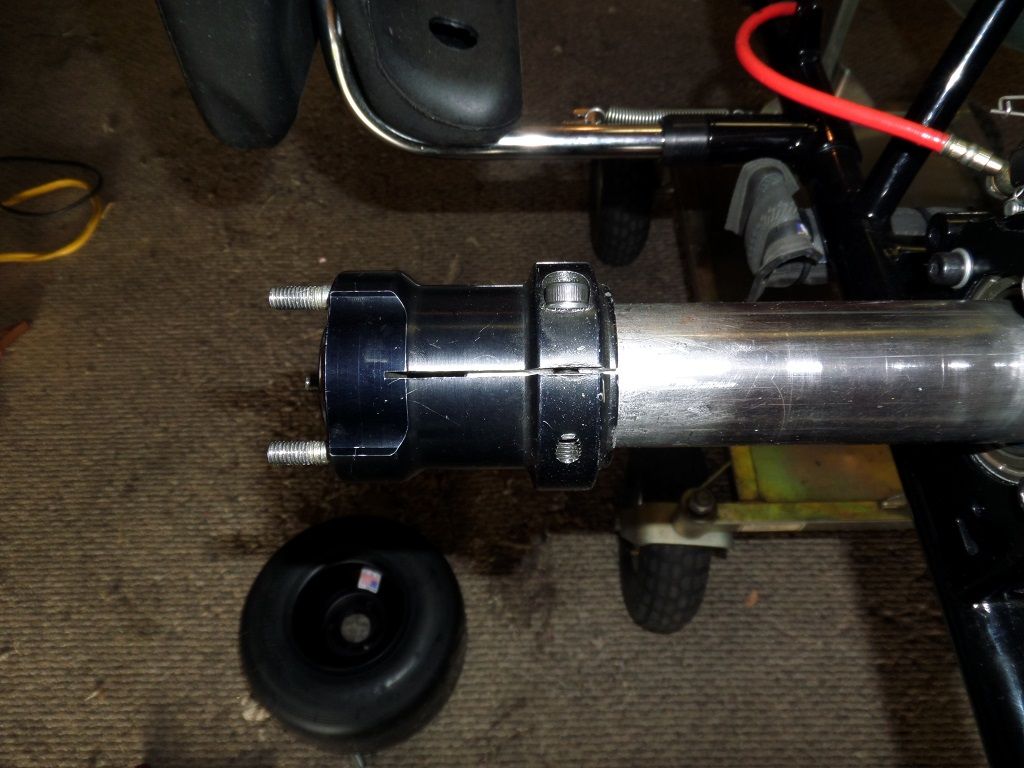|
|
Post by Helpme411 on Feb 10, 2014 13:11:57 GMT -5
How far out is it safe to move rear hubs out?   |
|
|
|
Post by Dan Pell on Feb 10, 2014 15:41:06 GMT -5
That's a trick question, because it matters what the axle hardness is. As a rule, the first measurement should be to make sure that 55-1/8" is not exceeded (legal limit) then work backwards. What most use as a reference when moving hubs out, is the round collar (within the hub) that has a bolt through it, and do not go further. That translates to about 3/4", but with a softer axle, some require more "meat" to keep the end of the axle from coning (tapering down) when tightening. We've made & installed hard plastic inserts that protrude about 1-1/2" inside the axle, and help to limit coning in the softer metal.
|
|
|
|
Post by ron90 on Feb 11, 2014 13:58:18 GMT -5
The other thing to pay attention to is the manner in which the axle is secured and the specific RULES you follow for the series you are racing. This translates into were the set screw is placed on the axle and how far in or out it goes. top picture has set scrw on the keyway, which means if it slips it could come off. If set screw is on axle to the inside of the keyway, even if it comes loose it would have to come out before the hub could slip off because the set screw could not slip over the leyway.
There are also rules for running a set cable through the axle, but I would have to look at the book to see specifics.
For me, I don't know all of the technical nuances for soft/medium/hard axles, and widths. Nor do I notice a HUGE difference when I move the axle a 1/2 inch or so. I have always been a seat of the pants type of racer. If the kart is loose I drive a certain way. If it tightens up I adjust my driving style. The driveability of a kart when you start a race may be night-and-day from how it drives when you finish. Seat time is all important.
If you are a top notch racer and these types of changes make a huge difference for you then you should already know the answer. I will assume you are a newer driver simply trying to get educated. I could be wrong and you are more experienced then I am . Just offering information. If you are just starting out set it at a decent secure width and Drive, Drive, Drive. Practice different lines, different speeds, different speeds of turning the steering wheel. Seat time is huge, and minor changes of widths for a relatively new driver, in my opinion, don't impact much. If you are really consistent then the changes could mean something.
I remember practicing with someone who said his kart was dialed in. He went baclkon the track. I got behind him and saw one wheel had pushed all the way in to the frame. he kept driving. I passed him and signaled him to pit. He did and asked me what was the matter. I pointed to his kart. He exclaimed, "but it was driving better than it ever was". that fits my philospohy of securing it properly, do not exceed the 55-1/8, and drive, drive, drive, because for him it did not matter where the wheels were set.
Have fun. Look forward to seeing you at the track.
|
|